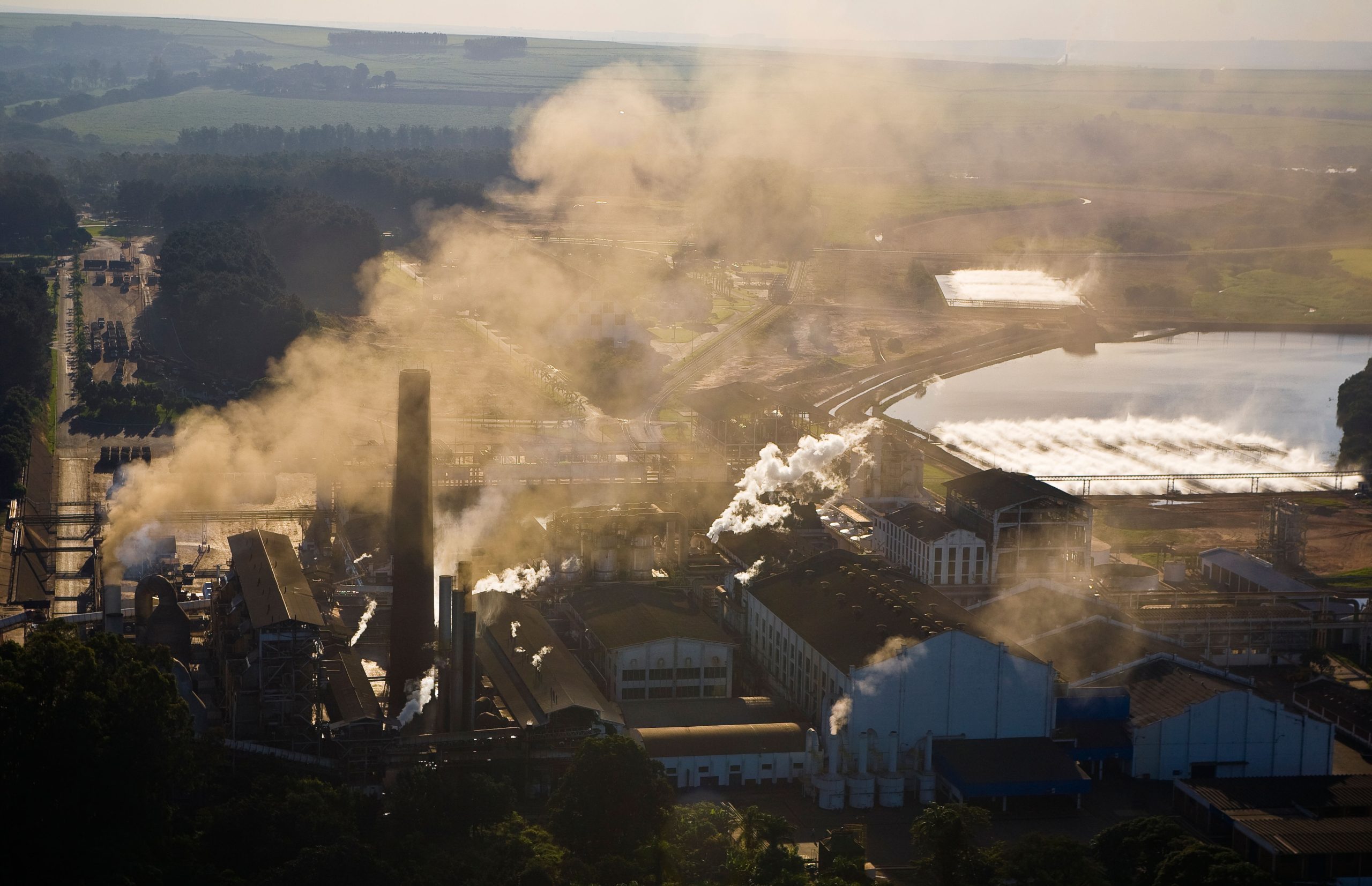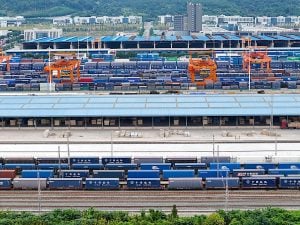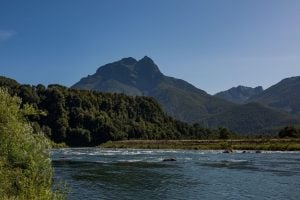Municipalities located in regions with heavy industrial activity are recording some of Brazil’s highest mortality rates linked to air pollution, data from a new government monitoring platform shows.
Several cities home to significant industrial activity in São Paulo, the country’s most developed state, top the national rankings on Painel Vigiar, launched by the federal government in 2024 to monitor pollution and its impacts in the country. For example, São Caetano do Sul, located in the ABC Paulista industrial region south of the state capital, recorded 320 deaths directly attributable to air pollution per 100,000 inhabitants between 2021 and 2023, while the Brazilian average for the period was 83 per 100,000 inhabitants. Other cities with notably high rates include Osasco, Guarulhos and the capital São Paulo itself, which are also among the most polluted cities in the country, according to the World Air Quality platform.
In Brazil, the biggest emitters of greenhouse gases are agricultural activities and changes in land use, which include forest fires related to deforestation in the Amazon, together accounting for almost 80% of domestic emissions. However, data from the Painel Vigiar underscores the greater impact on human health generated by the pollution from industries. Other factors such as emissions from transport systems could also influence the result.
“I would say that both types of pollution [from fires and industries] are bad, but industrialised and transport pollution have a long-term effect, it’s continuous,” said Ethel Maciel, secretary of health surveillance and environment at the Ministry of Health, who was responsible for launching the panel.
The platform counts deaths associated with air pollution, including cases of lung cancer, lung diseases that affect the circulatory and respiratory systems, as well as infections of the lower airways. Among other factors, these conditions are related to exposure to fine particulate matter known as PM2.5, released by vehicles, industrial processes, forest fires and other human activities.
Data source: Painel Vigiar, IBGE • Graphic: Dialogue Earth
Until last year, Brazil did not have a policy to tackle the problem. After 35 years of debate, the country finally instituted the National Air Quality Policy in May, which includes initiatives such as the launch of the panel.
“Monitoring allows for the creation of public policies,” said Maciel, highlighting as an example the city of Paris, which adopts measures such as restricting the circulation of vehicles when pollution levels reach critical levels. “All of this [must be] debated with society and implemented through laws,” she added.
Pollution deaths and the task of decarbonisation
A 2022 study published in the Lancet showed that air pollution was responsible for 6.7 million deaths worldwide in 2019.
Paulo Saldiva, a professor at the University of São Paulo’s Faculty of Medicine and a specialist in atmospheric pollution, explains that prolonged exposure to pollution can cause severe damage to health. He describes particles accumulating in the body acting like a “lung tattoo”, spreading through the tissues and triggering chronic inflammation. “This makes our biological time run faster,” he said.
Even though the industrial sector has made progress in reducing its emissions, contamination is still high. The cement, steel, glass, chemical, aluminium, paper and cellulose industries are finding it more difficult as they need to use high temperatures in industrial processes, requiring greater energy use that results in higher emissions.
“There are sectors that have already invested a lot in decarbonisation, such as cement, and others that still need to evolve,” said Davi Bomtempo, executive manager for the environment at the National Confederation of Industry (CNI).
A study by the Federal University of Rio de Janeiro, published in 2017, revealed that air pollution in Volta Redonda – the city that is home to steel giant Companhia Siderúrgica Nacional (CSN), part of the largest industrial sector in the country – exceeds the limits of Brazilian legislation. The rates were established in 1990 by the National Environmental Council (CONAMA), which is responsible for standardising environmental policy in Brazil.
The author of the study, environmental engineer Náthaly Tonon, said that seven years after its publication, there has been no significant progress in Volta Redonda. In fact, she said, “A resurgence in air quality issues is visible, since pollution has now reached more distant neighbourhoods.”
According to Tonon, CSN had until September 2024 to comply with a conduct adjustment agreement with the state government that required it to modernise its equipment to reduce pollutant emissions. However, the measures were only partially complied with, leading the authorities to extend the deadline to 2026.
Tonon emphasises that industrial pollutants cause as many impacts on health as they do on the environment. Health conditions include those monitored by the Painel Vigiar, such as asthma, chronic bronchitis, pulmonary emphysema, among others. In terms of environmental impacts, air pollution is associated with acid rain, damage to biodiversity and the intensification of climate change.
The environmental engineer also described air pollution as creating urban heat islands, as well as affecting wind circulation and local rainfall patterns.
Efficiency reduces pollution
Venilton Tadini, president of the Brazilian Association of Infrastructure and Basic Industries, told Dialogue Earth that in order to reduce industrial pollution, it is essential to increase the sector’s efficiency –a challenge for which manufacturers are increasingly eyeing solutions in digital innovation and artificial intelligence. However, this can have a side effect: increased demand for electricity.
“The more you increase the automation capacity and efficiency of your industry, the greater the energy consumption by the servers,” explains Tadini.
He explained that it is possible to improve the efficiency of a steel mill by adopting new furnaces or modernising the rolling mill structure, for example. However, these changes also demand more energy from data processing centres.
Driven by the artificial intelligence and cryptocurrency sectors, the global energy demand of data centres could double by 2026, according to a 2024 report by the International Energy Agency.
Bomtempo, from CNI, emphasises that in order to meet such an increase in demand for electricity, Brazil needs to plan the expansion of its installed capacity, avoiding the use of thermal power plants that rely on fossil sources to generate energy.
Most data servers are currently located in the United States and Europe. This means that for Brazilian industries to become greener, they also need to consider the energy consumption of these international servers, which is usually provided by fossil sources.
Industrial logistics also pollutes
Logistics around both industrial parks and freight transport bring other challenges to the sector. A report with 2019 data from the World Economic Forum highlighted that Brazil ranks 85th out of 141 countries in terms of the overall quality of its transport infrastructure. This position reflects its difficulties in modernising logistics, which compromises its efforts to reduce the sector’s carbon footprint.
Around 65% of freight transport in Brazil is carried out by road, and the majority of trucks run on fossil fuels.
The Brazilian government is trying to reduce transport emissions through the Fuel for the Future Law, which came into force in October 2024. It aims to increase the percentage of biodiesel – derived from vegetable oils – included in diesel oils to 20% by 2030; this mandatory mixing is set at 15% for 2025. Meanwhile, Brazil is struggling to expand its railway network, which is predominantly used to transport iron ore.
Expert João Victor Marques, from the FGV Energia research centre, believes that the law is an important step towards reducing the country’s emissions: “We haven’t had such an ambitious policy for the biofuels market for a long time. There are undoubtedly improvements in the inclusion of new green alternatives. Overall, I see it as a positive policy for reducing emissions in the Brazilian transport matrix.”
In 1989, CONAMA set up a programme to control air quality in Brazil. The plan provided for the creation of air pollution monitoring network, with equipment for measurements, as well as strategies for dealing with critical episodes. But monitoring still does not cover the whole of the country. The state of Rio de Janeiro has more than 120 stations, the highest in the country, followed by São Paulo, with almost 80 points. However, in Brazil’s northern region, which is home to the Amazon biome, there are no such stations at all.
“In the north of Brazil and in some other states, there is no official monitoring, only what we call low-cost monitoring,” said Helen Sousa, a researcher at the Institute for Energy and Environment (IEMA).
Another major problem is that air quality is not properly assessed or considered during the licensing process for new industries, Sousa added: “It’s often not taken into account that the area may already be saturated with high concentrations of pollutants.”
At the broader level, Brazil’s emissions and plans for decarbonisation are likely to attract global attention this year with the country set to host the United Nations’ COP30 climate summit in the northern city of Belém. Brazil is among the first to have submitted its updated nationally determined contribution – its plan detailing its commitments and targets to 2035 as part of the Paris Agreement – though this has been met with a mixed reception by environmentalists, who have raised concerns over its level of ambition and the country’s plans to increase oil and gas production.









